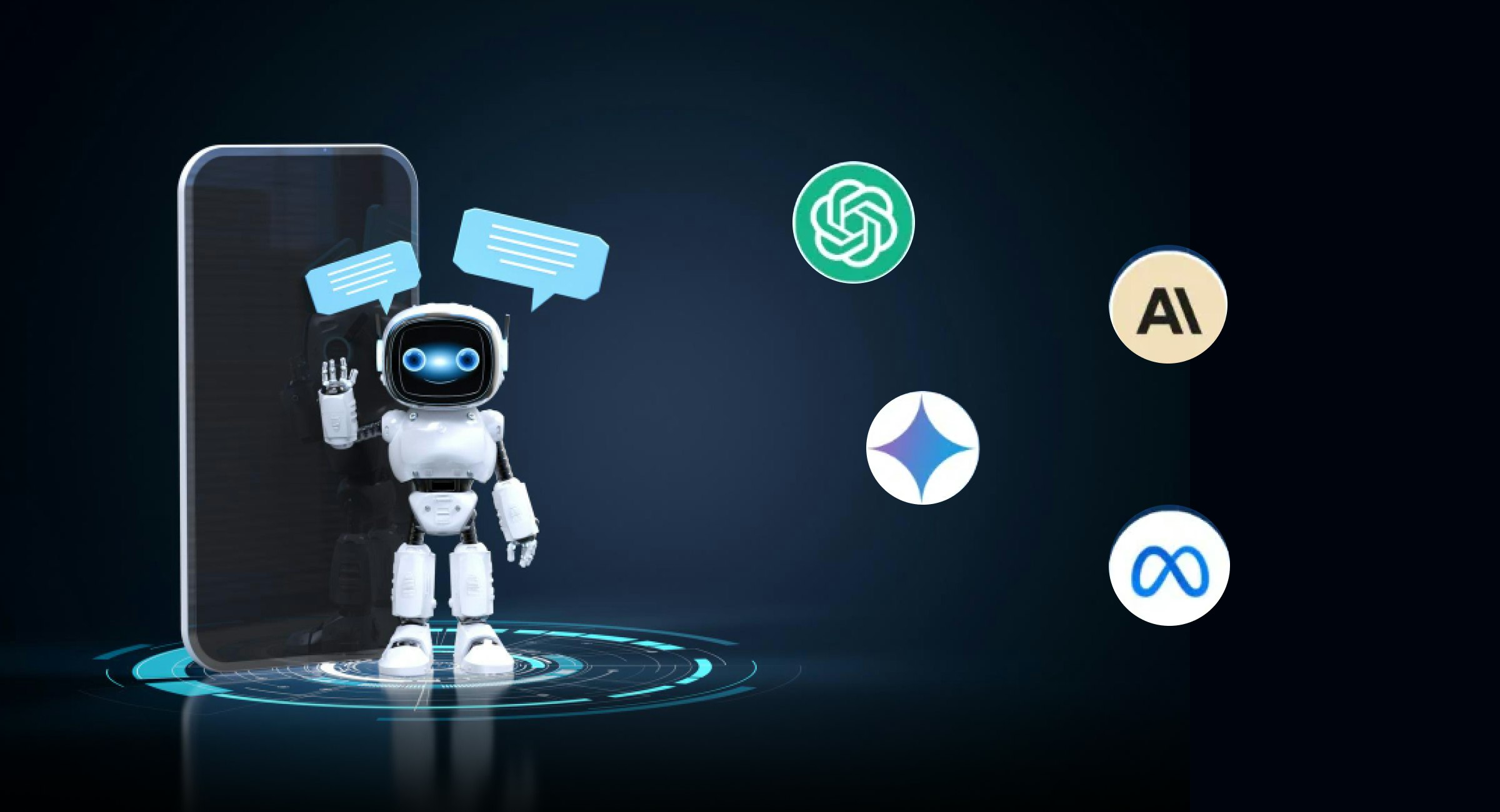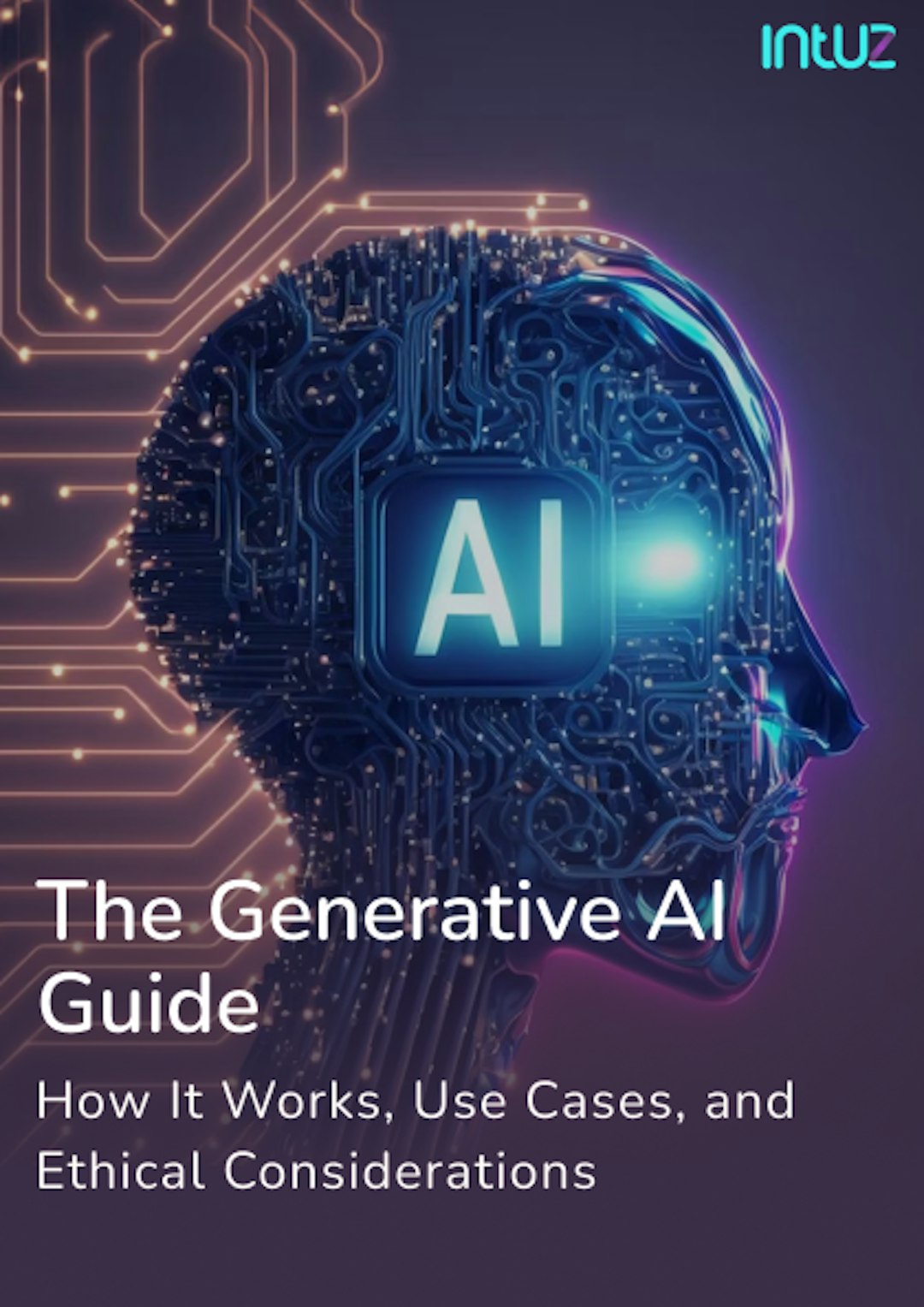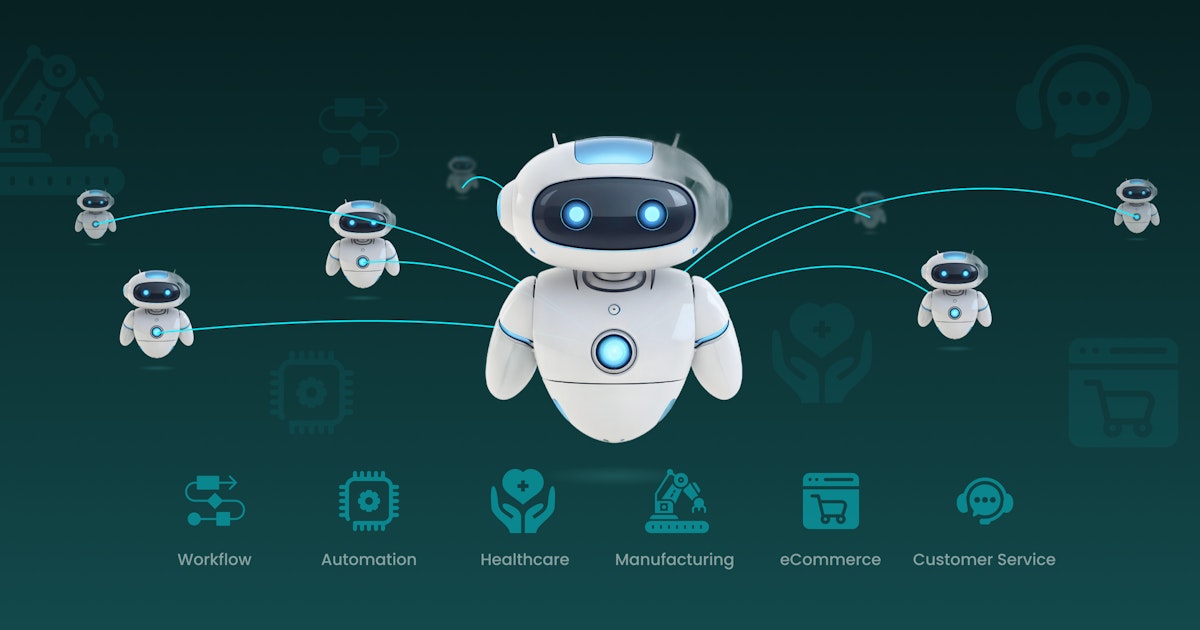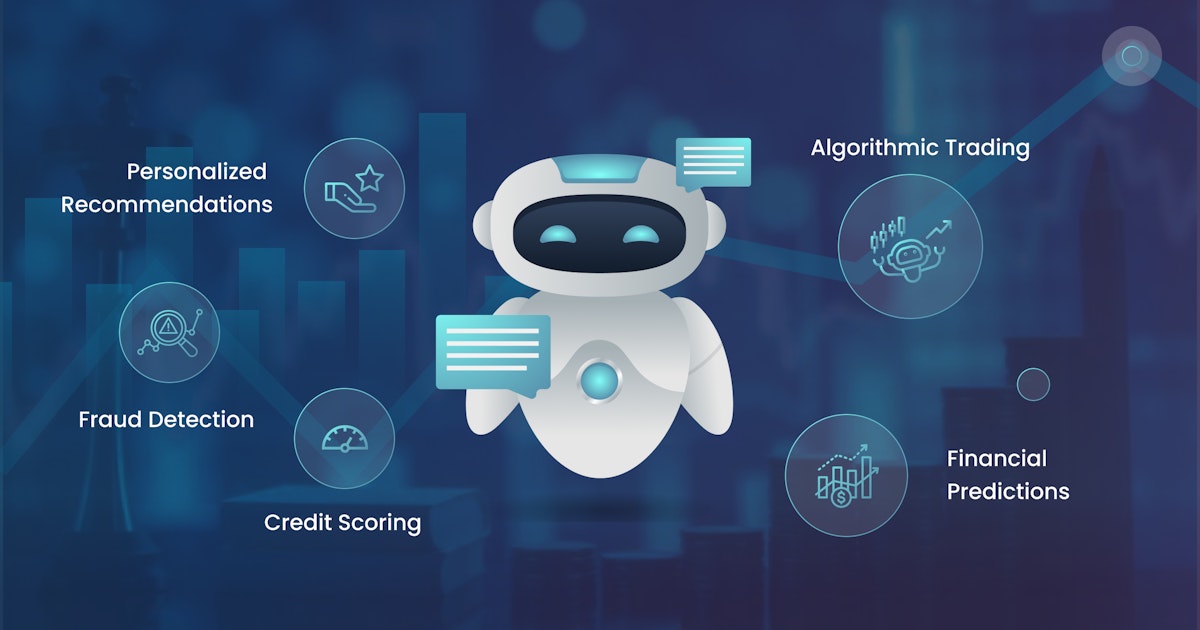Table of Content
How Public LLMs Fall Short for Industry-Specific Needs
Using a private Language Learning Model (LLM) can seem like a solid option for your SMEs, as the hard work of building the model is already being done.
But why’s that, you may be wondering? Public LLMs face pressing challenges, such as data privacy concerns, the high cost of model usage, and a lack of relevance to specific industry or operational needs.
When you use a public LLM, your data is often exposed to potential risks, such as external data sharing or inadequate data governance.
In industries like healthcare, finance, or law, where privacy is critical, an in-house model can better ensure compliance and security, giving you greater peace of mind and control over sensitive information.
The financial burden of using public LLMs can also escalate quickly. Usage-based pricing models, which charge per request or volume of data processed, may seem affordable initially but often grow unsustainable as usage increases.
Finally, general-purpose models may not deliver the depth of understanding you need; for instance, a retail-focused LLM won’t be as effective for a company specializing in legal services.
What Are Private LLMs?
A private LLM is a custom AI model built on an organization's specific data and goals. Since you provide the data that trains the LLM, its results directly relate to your business, helping you gain the most accurate insights possible when tackling specific industry challenges.
Contact Intuz, an AI development company to better understand the terminology.
Why Does Your Business Need A Private LLM?
- Better data security: With a private LLM, all sensitive data remains under your control. This helps guarantee that your customer details will stay secure, mainly if you handle confidential information, such as healthcare or finance data.
- Industry-specific responses: The significant advantage of a private LLM is that you can train it in the exact language and nuances of your industry, be it legal jargon or IT support content. This helps deliver relevant insights that your team can immediately take action, enhancing operational efficiency.
- Lower operational costs over time: While building your LLM is an upfront cost, you save a considerable amount by not paying usage fees to a third party, allowing you to keep expenses low even when your business scales up.
- Supercharged sales with AI assistance: Your private LLM can give your sales and marketing teams personalized insights on customer behavior or product trends, helping them amp up their service and boost conversion rates.
Top 15 AI Software Development Companies in USA
Explore NowTypes Of LLMs
1. General-purpose LLMs
These are broad-based LLMs built on large internet datasets, like GPT-4 or OpenAI’s Davinci, and deliver more generalized insights rather than tailored industry-specific content.
2. Domain-specific LLMs
These are trained on industry-specific data so that they can understand relevant topics and contexts and deliver more precise insights than general-purpose models. For instance, Bloomberg has developed BloombergGPT, a financial LLM trained on financial data.
3. Instruction-tuned models
These models accurately follow many user instructions, including translation, summarization, step-by-step guidance, content creation, and code generation. The ChatGPT application is an ideal example here.
Did you know Intuz offers ChatGPT application development services?
4. Multimodal models
These LLMs process and interpret various data types, such as text, audio, and images, to deliver hyper-specific and customized outputs. DALL-E and CLIP, for instance, can generate images based on text or identify objects within images.
How to Build a Private LLM from Scratch
Step 1. Define objectives and requirements
Being clear about the what and why of your LLM will help you build one that’s ideally suited to your needs.
As a first step, define clear use cases for how the private LLM will serve your business. For instance, you might need it to customize eCommerce product recommendations, process insurance claims, or help with legal document review.
Then, draw up a list of desired outcomes and KPIs to track LLM performance and make necessary adjustments as you go. For example, for customer service, KPIs might include reduced average handling time and a higher rate of first-contact resolution.
Setting up an LLM will cost money, so have a budget in mind. Determine how much you will spend on data acquisition, technical support, and hardware.
Defining clear objectives and requirements is crucial; this is where Intuz excels.
We provide hands-on consulting to help you identify high-impact use cases, set clear KPIs, and define a realistic budget and timeline. We ensure your private LLM project aligns with your goals, reducing trial-and-error costs and accelerating deployment.
Step 2. Select an open-source LLM framework
Opting for the proper open-source framework can save you considerable time and money when building your private LLM. Here are some options to consider:
- With an extensive library of pre-trained models and customization tools, HuggingFace Transformers is one of the most popular frameworks for LLMs. It also comes with comprehensive documentation, which is ideal if your SME has a smaller technical time. Even though it’s free to use, computing costs apply.
- Google’s TensorFlow and its high-level API Keras offer a range of robust options for training large models. You can customize them extensively, but they require some technical expertise, making them expensive. View our TensorFlow development services.
- Meta’s PyTorch is a solid choice for projects requiring complex customization. It comes with extensive documentation and community support. The bigger the model, the more computing power is needed.
- Rasa is a specialized framework for Natural Language Processing (NLP) and dialogue management, perfect for building chatbots or conversational agents.
Whichever option you pick, remember to be aware of the hardware requirements involved. Small-to mid-sized LLMs like GPT-2 can usually be fine-tuned with just one high-end GPU (e.g., an NVIDIA A100). Larger models might require multiple GPUs or cloud-based Tensor Processing Unit access. Opting for the cloud is cost-effective, as it also lets you scale with ease.
Step 3. Collect and process domain-specific data
The more specific and high-quality your data is, the better your LLM will reflect and comprehend the nuances of your business. Sources of relevant data include:
- Your SME’s internal data sources like product documentation, customer support transcripts, and training manuals
- Publicly available data like research papers, industry reports, or relevant journals
- Web scraping to gather niche data from industry-specific websites or social forums
- Data partnerships with third-party providers who can offer specific datasets with valuable industry information
The next critical step is to preprocess the data so your model learns from high-quality input free of noise or irrelevant information. There are three steps involved:
- Cleaning: Remove any redundant or irrelevant data, such as customer conversations on off-topic matters, that could bias or confuse the model.
- Labeling and structuring: Organize your data as much as possible by labeling and sorting wherever relevant (such as annotated contracts). This will help your model’s insights be more contextually relevant.
- Data augmentation: This is useful when you have a small dataset to avoid having your model trained only on that dataset. Try creating variations on the data you have to help the model generalize better, such as by writing variations on common customer queries.
Intuz can help you collect, clean, and structure domain-specific data from internal sources or external partnerships to ensure your model is accurate and deeply aligned with your industry’s nuances. Our data experts streamline the process so your LLM gets trained on high-quality inputs from day one.
Check out how we built a GenAI app for a client that could chat and collaborate across documents in multiple languages.
Step 4. Pre-train or fine-tune the model
While pre-training lets you set up a completely bespoke model, fine-tuning is generally faster and more cost-effective.
Pre-training from scratch is the better option if:
- You don’t have an existing open-source model aligned with your needs
- You have high volumes of domain-specific data
- You have sufficient computing power
And fine-tuning is preferred when
- You have a limited dataset
- You have limited computing resources
- You have a closely aligned open-source model already
Here’s how to fine-tune an existing model:
- Choose a base open-source model like BERT or GPT.
- Clean your data and format it to the model’s input requirements.
- Define training parameters like batch size, learning rate, and epochs.
- Train the model on your data with a framework like Hugging Face’s Trainer API.
- Use techniques like data augmentation or dropout regularization to avoid overfitting the model to the training data.
- Test the fine-tuned model on a dataset to validate its accuracy, error rates, and response relevance.
Here’s how to pre-train a model from scratch:
- Choose an architecture that’s in line with your needs.
- Gather a large and varied dataset of domain-specific data.
- Set parameters with longer training times and lower learning rates than when fine-tuning an existing model.
- Assess what computing resources you will need. Consider using cloud-based solutions or optimizing with model distillation for more efficient resource usage.
- Have a warm-up phase to stabilize learning, then keep running training passes as needed.
- Keep evaluating the model on a validation dataset to verify it is learning how you want it to.
Lucky for you, Intuz makes this process seamless. We help you leverage the latest pre-trained models and AI frameworks and customize them to your business needs, significantly reducing development time and costs while improving the model’s accuracy for your specific use cases.
View our process for building an AI speech-to-text app for this client.
Step 5. Evaluate and monitor model performance
Evaluation and continuous monitoring ensure that your LLM is effective at launch and continues to learn and adapt to evolving needs.
By continuously monitoring core metrics, you can quickly identify and fix dips in performance, stay compliant with relevant data governance laws, and sustain user trust by delivering the answers they seek. Some metrics to assess your LLM’s performance include:
- Accuracy: How often your model’s responses match the desired outcome
- Relevance: How well the model’s responses align with the given query, even in nuanced cases
- Error rates: Where and how often false positives or false negatives arise
- Response time: How fast the model generates responses to queries (ideally, within a few seconds, especially for customer-facing solutions like chatbots)
- User satisfaction: How satisfied users are with the quality of the answers the model is delivering
We recommend the following monitoring tools and frameworks to stay on top of your LLM metrics:
- MLflow: Track experiments and compare performance across different versions of your LLM
- Prometheus and Grafana: Monitor your response times and server performance in real time
- Hugging Face’s Evaluation API: Assess specific NLP activities like question answering and text classification
- Custom dashboards (built with tools like Flask or Streamlit): Continuously monitor user interactions, satisfaction scores, and real-time model outputs
Step 6. Conduct Rigorous User Testing and Improve the Model
The buck doesn’t stop at building and implementing the LLM model.
Collecting feedback is crucial for refining the model to align with actual user needs. To capture detailed insights, utilize diverse feedback collection methods such as surveys, in-app prompts, and user interviews.
Also, a success criteria checklist should be established to gauge whether the model effectively serves its purpose. Be proactive in identifying common issues, like incorrect responses or ambiguous outputs, and have a set of solutions ready to address these problems.
In addition, pay close attention to scaling considerations as your user base grows, ensuring your system can handle increased load without compromising response times.
10 Best AI Agent Development Companies in USA in 2025
Explore NowImportance of Private LLM
1. Scale seamlessly without compromising speed or accuracy
When you own the LLM, you can optimize it for specific tasks and hardware, minimizing latency and maximizing throughput. You can scale workloads horizontally or vertically based on business demands without being constrained by shared infrastructure or third-party limitations.
2. Get more relevant results with custom-tailored AI
Private LLMs can be fine-tuned on proprietary or industry-specific data, enabling highly accurate and context-aware responses.
This personalized training ensures the model understands the niche terminology, organizational knowledge, internal workflows and products, and more relevant and actionable outputs compared to general-purpose public models.
3. Gain control and reduce vendor lock-in
Training and deploying LLMs internally ensures your sensitive data, confidential insights, and proprietary research never leave your secure environment. This approach significantly minimizes exposure to data misuse or leaks, which can occur when using public AI services.
4. Keep your data and ideas secure
Using a private LLM eliminates reliance on third-party APIs, reducing risks associated with vendor lock-in, changes in pricing, or service outages. It offers greater autonomy over updates, feature rollouts, and long-term strategic direction.
Considerations When Choosing Private LLMs for Your Business
1. Assess your data privacy and compliance requirements
Before deploying a private LLM, evaluate whether your organization needs complete control over data handling, storage, and processing. This is especially important for industries handling regulated, confidential information like healthcare and pharma. Ask yourself: is the LLM compliant with regulatory requirements and internal security policies?
2. Evaluate infrastructure for deployment and performance
Running private LLMs means provisioning your computing resources. Check whether your on-prem or cloud environment can support training, inference, and scaling requirements without bottlenecks. This is a key point, especially when dealing with latency-sensitive apps.
3. Prioritize data quality and governance
Private models thrive on curated, domain-specific data. Strong governance practices, such as structured data pipelines and labeling protocols, ensure the LLMs learn from accurate, relevant information and generate reliable outputs.
4. Plan for ongoing operational investment
When private LLMs avoid per-call API fees, they demand investment in fine-tuning, infrastructure, monitoring, and updates. That’s why it’s vital to factor in engineering resources and MLOps tooling for long-term sustainability and performance optimization.
5. Detect and mitigate embedded model bias
Even in private environments, models can carry forward biases from initial training datasets. Therefore, to ensure results remain fair, safe, and aligned with your organizational values, leverage diverse training data, bias audits, and human-in-the-loop evaluation.
Get Expert Guidance on Implementing Secure, Custom AI Solutions for Your Business!
Contact UsIf you need expert support with the entire process, you can always count on our AI specialists.
Just book a 45-minutes call with us to dive deep into a custom strategy we’ll develop for you then and will provide you the top-level implementation plan.








